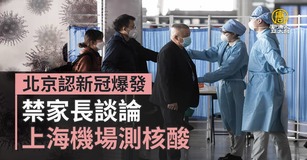【新唐人2011年5月3日訊】中國媒體報導,安徽省電力公司為了推動「車改」,特別幫300名幹部配車,雖然安徽電力說這為公司降低了管理成本。不過媒體質疑,每人一輛自駕車,真能為公司省錢嗎?
上週末(4月30號)《浙江在線新聞》報導,安徽省電力公司近年來為了推動「車改」,特別幫300名副處級以上的幹部配備公務自駕車,而且配車越來越豪華。從早期的國產奇瑞汽車,到現在價值20萬元有德國血統的一汽大眾邁騰汽車。
雖然安徽電力急忙解釋:「車改」為公司降低了管理成本。不過媒體質疑,每人配一輛自駕車,全部費用還由公司負擔,怎麼幫公司省錢?」
報導指出,安徽電力為幹部配備公務自駕車,說白了就是給公司管理階層配車。公司的理由更是讓人難以接受,現在一人配一輛自駕車,雖然是節省了公交車司機的工資費,但是,誰規定幹部回家一定要派公交車接送?而且多人搭一輛公交車回家,通常會比每人配一輛自駕車省錢。
《中國評論》的報導也指出,大約從1996年開始, 中國開始出現公交車特權化的現象。中共政府及各部門處室運用各種理由給官員配車。於是各地方政府上行下效,凡是副科級以上領導幹部,幾乎每人配一輛公務車,官員上下班,或下班後迎來送往全部免費開公交車。
根據估計,每輛公務車每 年要花至少3到5萬,甚至8萬到10萬的人民幣,一個省級廳局一年的公務車預算約200萬元,省級公有單位的公務車輛,每年花費國家2億元,加上國有企業,每個省每年的公交車花費大約50到60億。也就是說,全國每年公交車花費高達人民幣 2000億元。
台灣《新新聞》週刊在4月底刊登中國知名評論家長平的文章,其中向外界解釋中國的「公交車」,跟民主國家的公交車概念不完全相同。外國的公交車,是指供大眾使用的「公交車」。而在中國,雖然也有少數的公交車在跑,但中共官方文件會玩文字遊戲,把「公務用車」簡稱為「公交車」,意謂著把官員享有的「特權」,變成了社會大眾的公共事務。
文章還說,官員們的「公交車」數量遠超過一般民眾的「公交車」。2006年北京中非論壇期間,官方為了保障外國人交通便利,主動對「公交車」進行數量控制,還對媒體公布,北京巿百分之60的「公交車」暫時封存,約為49萬輛。加上五年來的成長,網友估計北京巿的「公交車」數量應該接近一百萬輛。。
新唐人記者曾耀賢、周昕屹綜合報導。
Cars for Chinese Officials
In the name of promoting a "vehicle reform",
Anhui Electric Power Company (AEPC)
assigned 300 cars to communist party (CCP) cadres,
citing reduction of administrative costs.
However, the media questioned the rationale.
On April 30, Zhejiang Online News reported,
Anhui Electric Power Company (AEPC) assigned
expensive cars to 300 high-level CCP cadres.
Previously it assigned Chinese-made Chery cars.
Now they are FAW-Volkswagen Magotan cars,
which are worth RMB 200,000 each.
Although AEPC immediately explained that
the "vehicle reform" is to reduce administrative costs,
the media questioned, how can AEPC save money
by equipping the cadres with company-paid cars?
The media criticized its unacceptable explanation.
With each cadre driving a company-purchased car,
although the salary costs of chauffeurs can be saved,
who said the cadres have to use the company』s cars?
Also, multiple cadres sharing one company car
is more money-saving than assigning one car to each.
China Review magazine pointed out that in 1996,
the phenomenon of car privileges started to appear.
CCP authorities and agencies use various reasons
to assign vehicles to CCP officials.
So all the local governments follow their example
by giving officials cars paid by the public or firms.
It is estimated that the annual expenses on one car
are from 30,000 yuan to 100,000 yuan.
One provincial bureau spends nearly 2 million yuan.
The total costs on equipping cadres with cars in China
are 200 billion yuan every year.
Taiwan's The Journalist magazine published in April
an article by Chinese commentator Chang Ping.
In the article, he talked about the term “public vehicle”.
In democratic countries, “public vehicles” are buses.
In China, although omnibuses exist,
“public vehicles” are defined as “cars for public use”.
CCP』s official papers try to play words by
portraying officials』 privileges as “for public works”.
Chang Ping also pointed out that in China,
there are more cars for cadres than buses.
When Beijing hosted the 2006 China-Africa Forum,
to make the traffic better for the foreign visitors,
the authorities temporarily suspended 490,000 buses,
which were approximately 60% of all buses in Beijing.
Netizens estimated there are 1 million buses in 2011.
NTD reporters Zeng Yaoxian and Zhou Xinyi
看下一集

【禁聞論壇】"染色饅頭"背後的秘密

【禁聞】本‧拉登被殺 中共噤聲

【禁聞】中國中產階級能推動民主運動嗎?

【禁聞】清華“二校門”:等於權利崇拜

【禁聞】本.拉登之死 牽動世界格局

【禁聞】2歲童看“新聞聯播” 眾人擔憂

【禁言博客】為山羊而戰

【禁聞】侯德健北京重登臺 6.4話題再起

【禁聞】本.拉登死 傷心?仇美?

【禁聞】“國網辦”將成立 破網軟件即更新

【禁聞論壇】 “精忠報國”還是“精忠報黨”?

【禁聞】美中對話在即 人民幣匯率仍為重點

【禁聞】中國女排背毛詩 “紅風”嚇跑外商

【禁聞】台灣新唐人遭噤聲 美國議員關注

【禁聞】中共軍報披露:退黨在軍內引反響

【禁聞】“恐怖主義土壤說” 官民看法不一






 財經趨勢4.0
財經趨勢4.0 新聞大破解
新聞大破解 新唐人財經新聞
新唐人財經新聞 選戰大透視
選戰大透視 遇見新聞
遇見新聞 老外看中國、老外看台灣
老外看中國、老外看台灣 美麗心台灣
美麗心台灣 田美女奉茶實客
田美女奉茶實客 廚娘香Q秀
廚娘香Q秀 大千世界
大千世界 1000步的繽紛台灣
1000步的繽紛台灣 好樣!Formosa
好樣!Formosa 健康1+1
健康1+1 談古論今話中醫
談古論今話中醫 我的音樂想想
我的音樂想想 胡乃文開講
胡乃文開講 她健康She Health
她健康She Health 天庭小子-小乾坤
天庭小子-小乾坤 總統教育獎
總統教育獎 全國孝行獎
全國孝行獎 健談交流
健談交流 悠遊字在
悠遊字在 傳奇時代
傳奇時代 音樂大賽特別節目
音樂大賽特別節目









